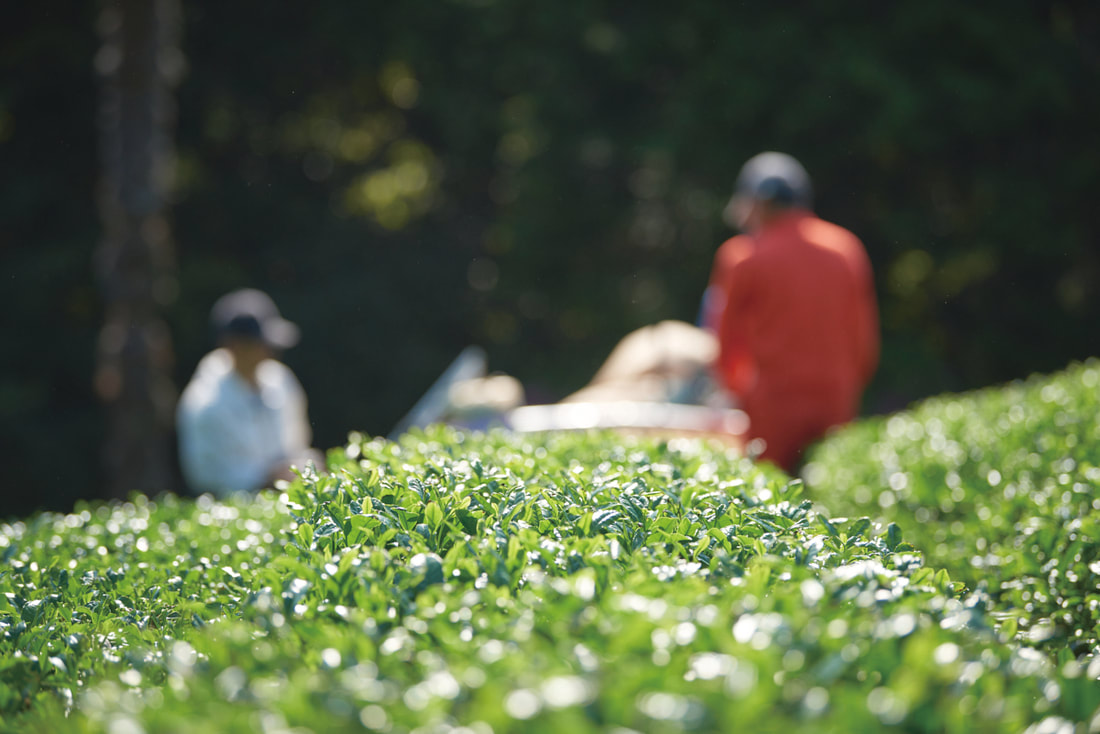Despite the wonderful appeal of the Kikukawa's new crop, tea farmers are in a difficult situation because the number of tea drinkers using a teapot has decreased due to recent lifestyle changes, and the demand for high-quality the new crop, which accounts for 70% of tea farmers' income, has disappeared.
|
"Summer is approaching, 88 nights, young leaves are growing in the fields and mountains..." This is an old song may all Japanese are familiar with, describing the time of year when tea is picked.
The season is May, just before summer. The tea shoots that have grown in the warm spring sun are spread out like a carpet of green. The tender young shoots, carefully picked to prevent damage, are not plentiful, but the best are harvested, and are known to the Japanese as “Ichibancha”, or “New tea(first crop)”. |
|
KYOKU uses the new crop tea from tea fields in Kikugawa City, Shizuoka Prefecture, which overlooks Japan's highest mountain, Mt. Fuji. The area has long been known as one of the leading tea growing areas in Japan, thanks to its mild climate and abundant water from one of the highest mountains in Japan.
Kikugawa tea leaves are characterized by their thick leaf flesh. “Ryokucha” green teas are made by steeping instead of fermentation. Steeping locks in its unique flavor and nutrients, but thanks to its thickness, it can be deeply steeped for more than twice as long as regular green tea leaves, resulting in a mellower flavor with less astringency.
|

















